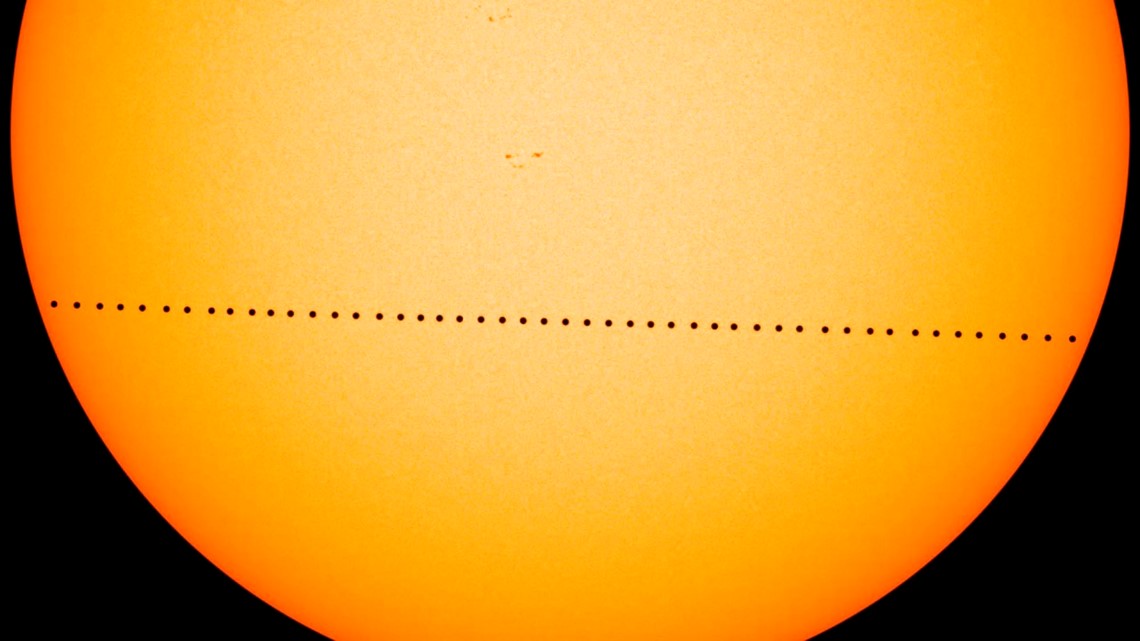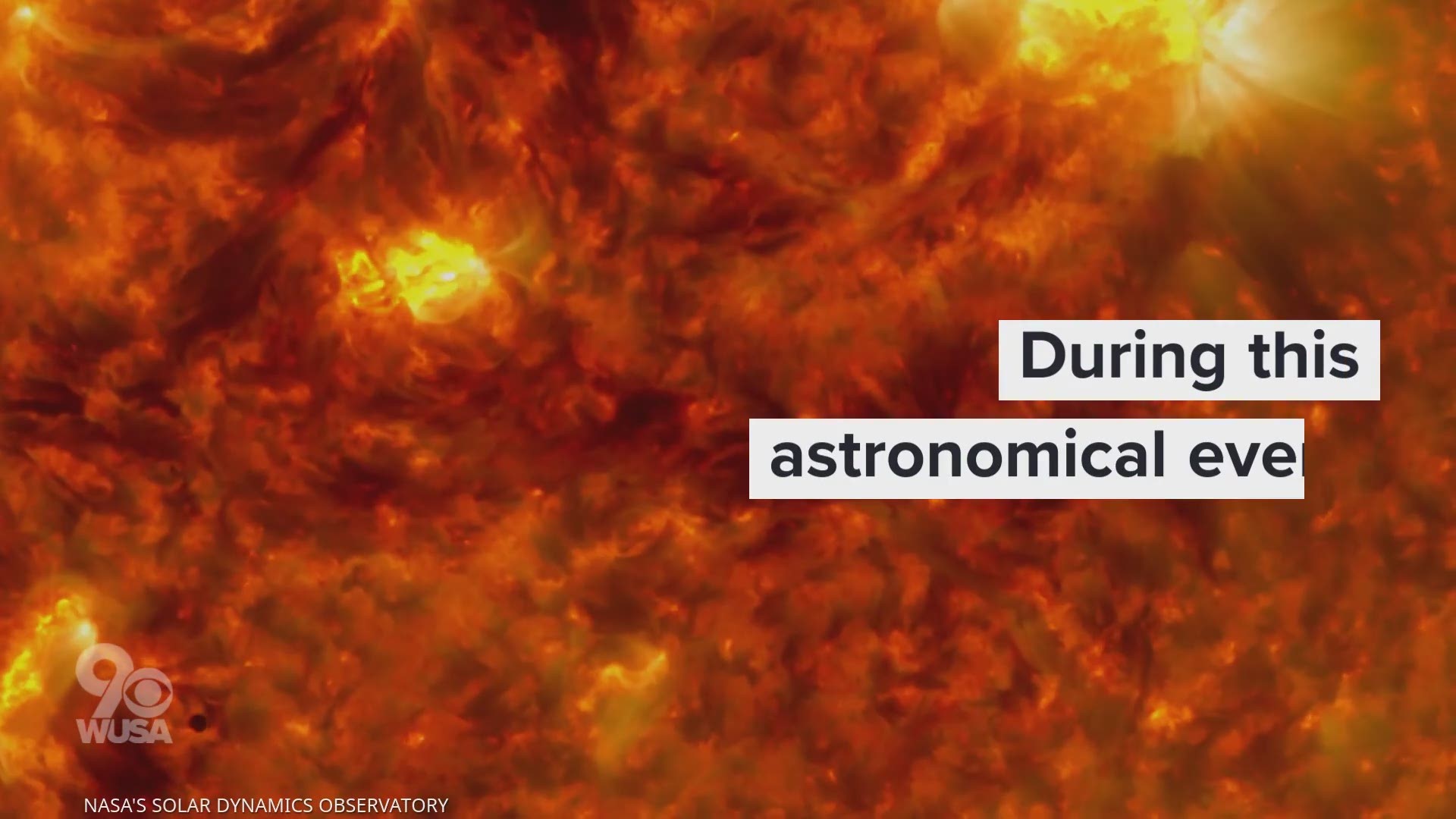WASHINGTON — Watch the planet Mercury glide across the sun on Monday, in an event that's called a 'transit'. During this astronomical event, Mercury's orbit passes directly in between Earth and the sun.
From our vantage point on Earth, it will look like a small black dot moving across the face of the sun when viewed through a solar lens on a telescope. Disclaimer: it is not safe to look at the sun with your naked eye. Mercury will begin crossing the sun at 7:36 a.m. and finish at 1:04 p.m. Transits are similar to eclipses, which happen between our sun, moon and Earth.


This uncommon event only happens 13 times per century! The next Mercury Transit is not until 2032. The wait for the next transit will be much longer than the last Mercury Transit which was just 3 years ago on May 9, 2016.
You should not look at the sun to find Mercury with your naked eye or with sunglasses. As with the Great American Solar Eclipse in 2017, your eyes can be damaged if you look directly at the sun. The safest way to view the Mercury Transit is by watching NASA's Live Stream, during which they will have a special solar telescope in space that will give you a clearer picture of what's happening.
Mercury is always closer to the sun than we are on Earth, following it's closer orbit. But our orbits around the sun are not a perfect circle and do not take the same amount of time. On Earth, we have one revolution around the sun every Earth year. Mercury orbits around the sun every 88 Earth days. Therefore, our orbits don't perfectly meet up for this 'transit' very often or evenly.
Historically, transits of planets gave astronomers a clearer picture of how big our solar system is and what it looked like. For hundreds of years since, they have been able to predict these transits and observe them.
Present day, NASA's spacecraft known as TESS, short for Transiting Exoplanet Survey Satellite, is surveying many stars in outer space. It is looking for new planets transiting around these stars. TESS looks for sudden drops in the intensity of the brightness from these stars to find new transiting planets.

